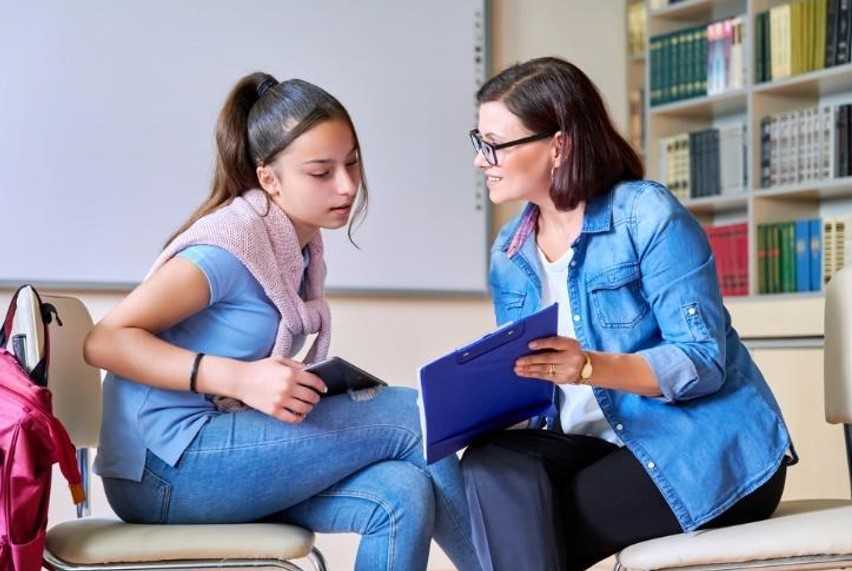More and more teachers have been noticing a decrease in motivation among students since the pandemic. Yet, a lack of motivation can adversely affect perfomance.
Motivated students generally perform better at school. They are highly engaged, autonomous, and self-driven. Although some students are intrinsically motivated, you have to gently push most of your students in the right direction. Below are 5 motivational strategies for students.
1. Set Clear Goals and Expectations
Set clear goals and expectations for your class and help students set their own realistic goals. Clear goals and expectations in the classroom environment give students a sense of direction. Setting goals with a realistic timeline also encourages them to be persistent and resilient. They can help build learner autonomy, as students know what to do at a given time.
There are different levels of goal setting and expectation management to think about. Start by setting the ground rules for conduct within the classroom and school environment, including when classes start, keeping time, how to go about group work, and submission deadlines.
Set daily learning goals and targets and have students assess themselves. At the beginning of each lesson, let the students know what they will be learning and assess if they understood what was taught at the end of the session.
Another thing to remember when setting goals to motivate your students is to establish high expectations they can rise to. Goals should also be clear and measurable, with a structured progression or timeline. Work with the students to break bigger academic goals into smaller, actionable steps you regularly track toward academic achievement.

2. Help the Students Develop Self-Efficacy
Self-efficacy is an individual’s belief in their ability to complete required tasks and achieve a set goal. Self-efficacy is a mindset. You can help your students develop it by giving them numerous opportunities to undertake moderately challenging tasks in independent learning settings.
Self-efficacy improves learning outcomes. Students believe in their ability to learn new concepts, integrate the information they learn, and undertake any tasks assigned to achieve personal development and educational goals.
There are different motivation strategies that teachers can employ to enable their students to build self-efficacy. First, establish a positive learning environment and teaching style that inspires and energizes the students to engage in the learning process. An unfavorable environment can stifle even the most self-driven students.
Secondly, employ teaching strategies and methods that align with your students’ needs, interests, and abilities. Incorporate different teaching tools to give students multiple opportunities for understanding.
Build up concepts gradually to enable students to understand them. Give moderate-difficult tasks. If the tasks are too simple, they become boring for the students. On the other hand, if they are too difficult, they lower the student’s self-efficacy.
Thirdly, you can boost their self-efficacy through positive verbal interactions. Encourage them to attempt tasks and engage in the learning process. Provide clear communication about each task and further clarification if need be. Affirm the student by telling them, “you can do this.”
Finally, give the students opportunities to interact with each other. For some students, the best way to develop self-efficacy is to see their peers succeeding at a task. It proves to them that they, too, can do it. Therefore, design your teaching methods to include small group work, gallery walks, and student presentations.
3. Encourage a Growth vs Fixed Mindset
One of the most common causes of lack of motivation for learners is a fixed mindset. Some students believe that good performers are born capable. As such, if they do not perform well in a given subject or overall, they resign to the belief that they cannot do well, even if they put in the effort. Such students shy away from challenging tasks and are less likely to engage in class and group work.
To help them develop a growth mindset, regularly remind your students that good performance mainly depends on effort rather than one’s ability. If you notice that they have improved in a given area, point it out and encourage them to keep putting in the effort.
Praise them for their efforts rather than their abilities. For example, instead of telling a student, “you are smart in math,” tell them, “I can see you have been practicing.”
4. Establish a Meaningful Relationship With the Students
Inspiring and motivating students is easier when you have a rapport with them. Allow them to get to know some aspects of you personally. For example, your hobbies, interests, where you grew up, if you have kids, and what you value. It makes you more relatable to them and eliminates preconceived notions they may have about you, which may hold them back from connecting with you.

Establishing meaningful relationships is a two-way street. Therefore, be deliberate about knowing and understanding your students. For example, you can have frequent class meetings where students can voice their concerns and questions about course materials, academic goals, or their learning experience in general.
The class meetings can also involve games aimed at getting to know each other or team-building activities to develop stronger, more positive relationships.
5. Encourage the Students to Support Each Other
Foster a sense of community where students feel accepted and valued. Encourage your students to treat each other with kindness, empathy, and compassion. Include collaborative activities in your teaching strategies and encourage students to interact with each other and work in teams.
When faced with challenges, urge the students to work together to develop solutions. Similarly, if there is something to celebrate, allow the students to come together in celebration establishing a “we” classroom culture.
6. Conclusion
You must be an expert in your primary content areas as a teacher. However, that alone is not enough to ensure excellent learning outcomes. You also need soft skills and the right techniques to motivate and inspire your students to learn.
However, motivating students can be challenging, especially if they are disinterested in the learning experience. Assess your students’ needs, interests, and learning styles and choose the most suitable motivation strategies.
Keep in mind that you might have to try out different teaching strategies before you narrow down the ones that work well for the overall learning experience of each student.




